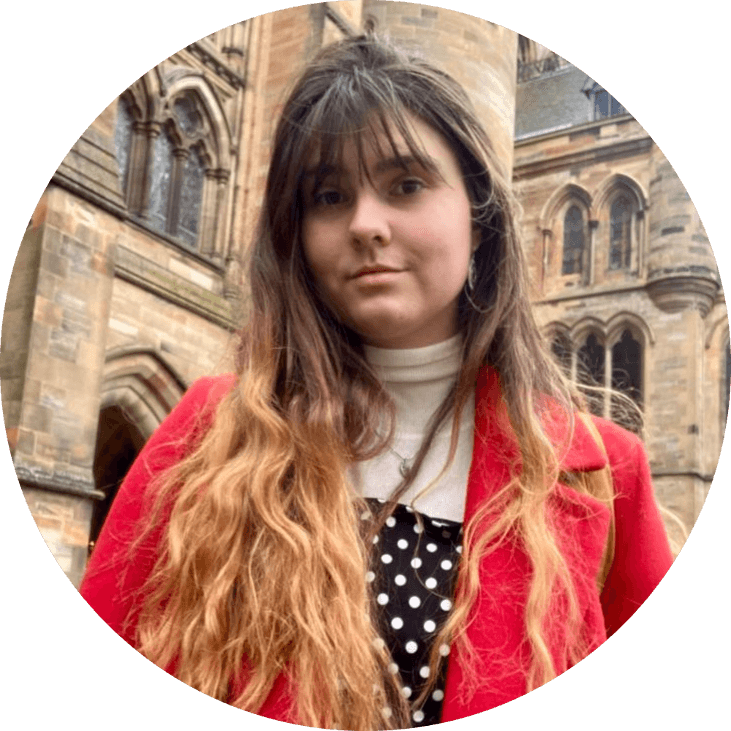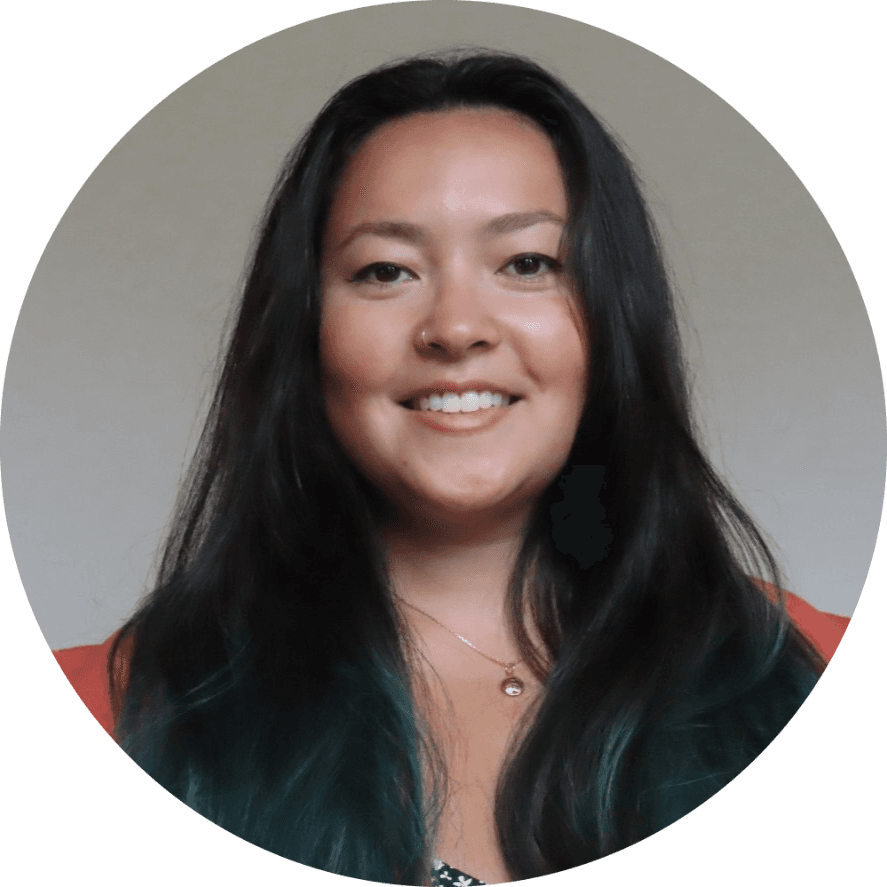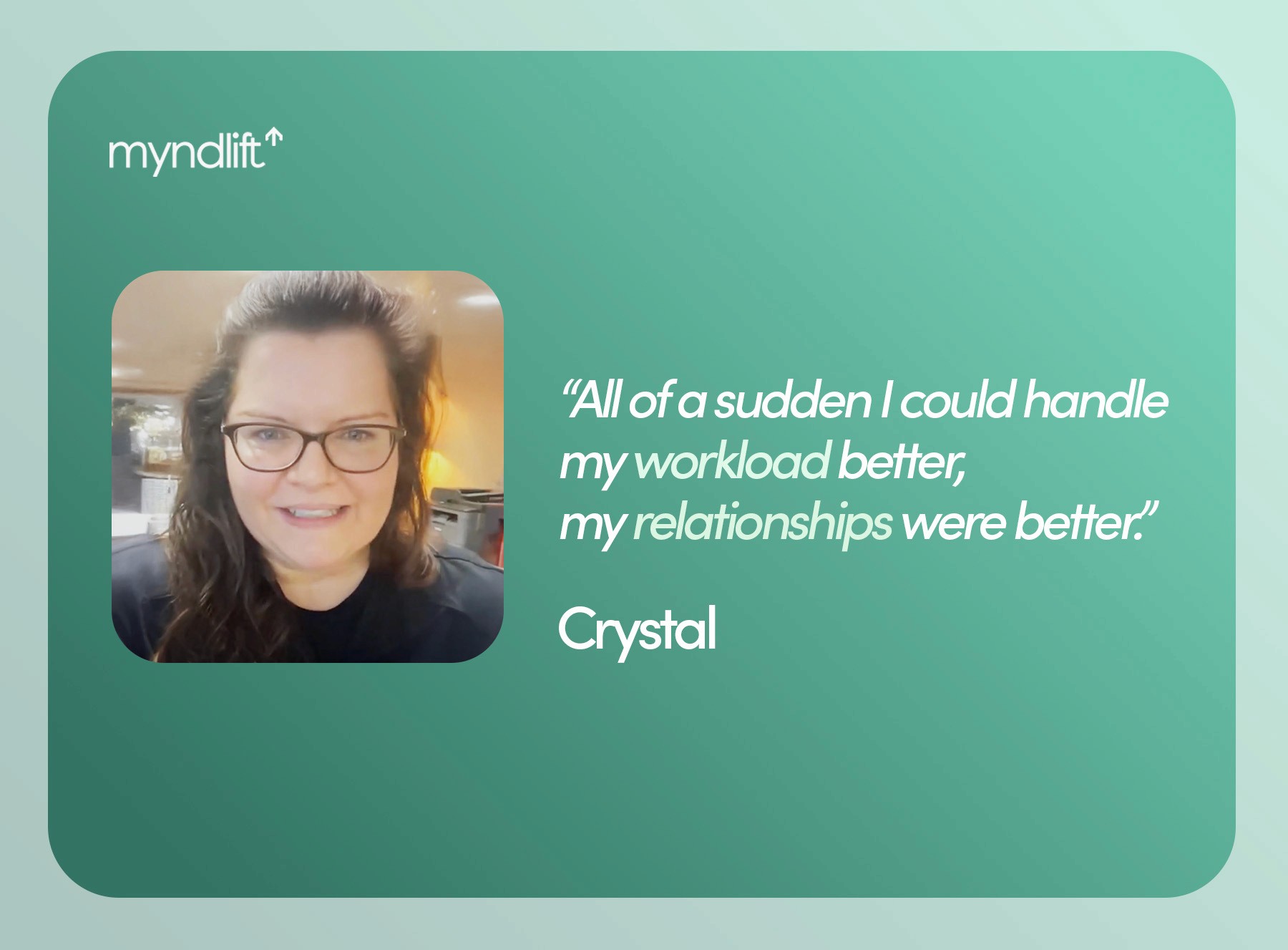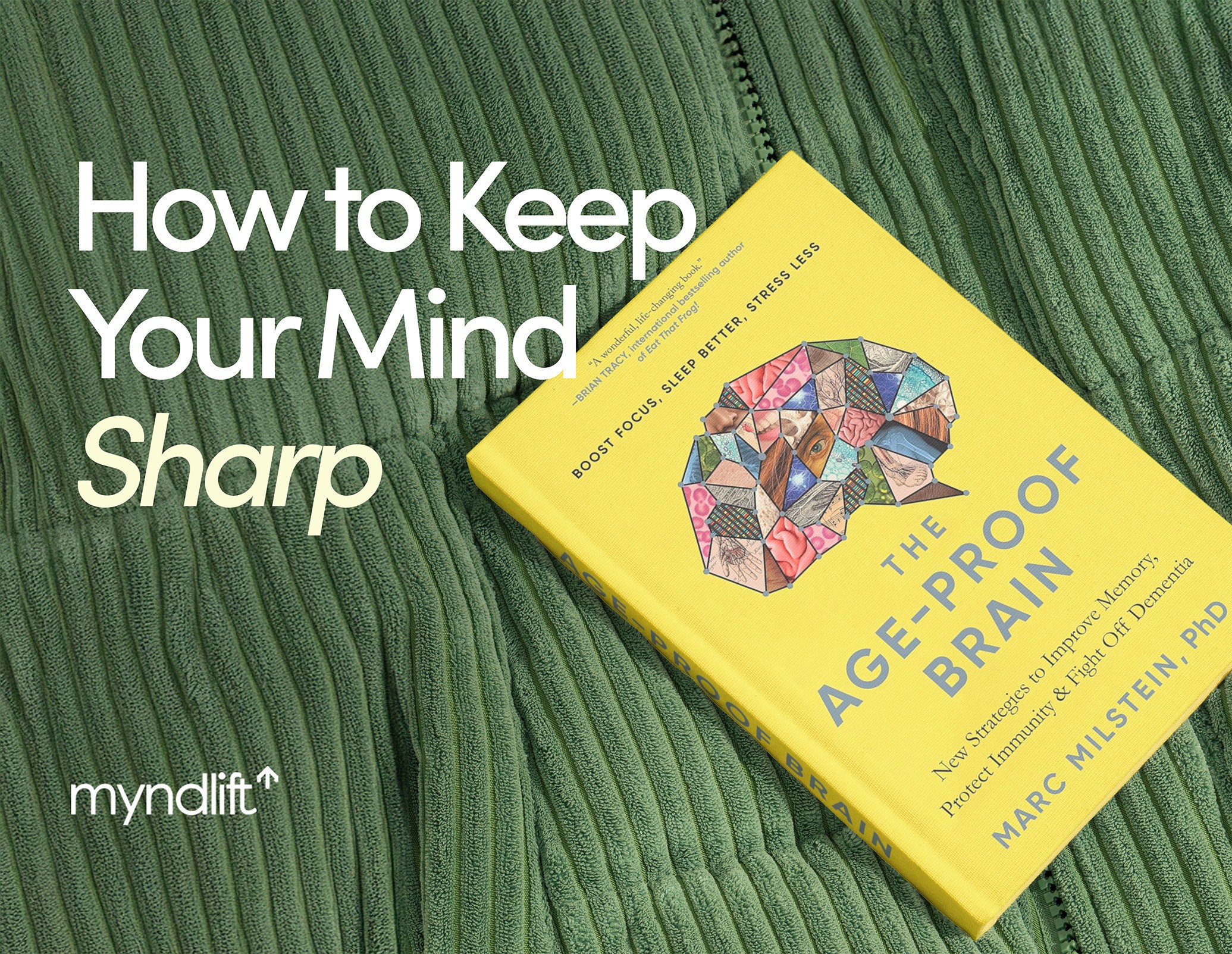In an ideal scenario, everyone in the world would be able to sleep through the night with no issues. Unfortunately, that is not the case; around fifty to seventy million people in the USA alone suffer from sleep disturbances, be it sleep apnea, insomnia, narcolepsy, or some less common problems, such as restless leg syndrome.
Far beyond sleep disorders having a negative impact on the quality or amount of your sleep, they can also cause impaired cognitive functioning during the day. For instance, you may find it harder to make decisions or find yourself forgetting things more often.
Some sleep disorders, like insomnia and narcolepsy, for example, are also referred to as sleep-wake disorders due to their connection to the circadian clock, the body’s 24-hour internal clock.
If you can’t fall asleep or have trouble staying asleep – as is the case with insomnia – your circadian rhythm may be disrupted. The same applies to narcolepsy, wherein you feel excessively tired throughout the day.
But worry not – due to the prevalence of sleep disorders, there’s a plethora of research out there, pointing us in the right direction when it comes to effectively treating sleep disturbances.
Today, we’ll have a look at the three most common sleep disorders and how to handle them:
1. Sleep Apnea
Sleep apnea is a sleep disorder that causes your breathing to repeatedly stop and restart. There are two types of sleep apnea:
Obstructive sleep apnea
Central sleep apnea
Obstructive Sleep Apnea (OSA)
When your upper airway gets blocked during sleep, it leads to irregular breathing patterns because your airflow becomes restricted. Some symptoms include:
Snoring
Irritability
Excessive daytime sleepiness
Worsened productivity in the daytime
Sleep that doesn’t feel refreshing
Various factors could potentially lead to sleep apnea, such as changes in hormone levels or obesity.
Fortunately, there are two things you can start doing right now that may help you manage the symptoms of obstructive sleep apnea (OSA) effectively. However, these might not necessarily cure OSA, so we recommend you speak to your doctor first and foremost.
1. Change your sleeping position
If you love sleeping on your back, we’ve got some bad news for you – studies show this is actually the worst position for sleep apnea. Due to gravity, the risk that your upper airway will restrict your airflow increases.
Try sleeping on your side instead! Sleeping on your side has been proven to help those suffering from OSA, as your upper airway is less likely to become restricted and you may snore less as a result.
2. Practice yoga regularly
Because sleep apnea causes restricted breathing, it may cause lower oxygen levels in your blood. Practicing yoga regularly can promote oxygen flow and strengthen your respiratory system, including the upper airway muscles.
According to research, one of the best types of yoga that target nasal airway problems is pranayama, the practice of focusing on and controlling your breath via various exercises.
Here is an example of bhramari pranayama (humming bee pranayama):
Hold your thumbs or index fingers to the tragus part of your ears.
Take a deep breath and hold it in for a few seconds.
Exhale through your nostrils while making a sound that resembles the buzzing of a bee.
This exercise should primarily involve your lungs rather than your abdominals.
To see what bhramari pranayama looks like in practice, watch this short tutorial.
Speak to your doctor
If your sleep apnea is failing to improve, don’t hesitate to reach out to your doctor again and let them know your treatment may need adjusting. They might conduct further diagnosis and recommend a treatment plan specific to your condition, which could involve:
Continuous positive airway pressure (we’ll discuss this in-depth in the next section)
Oral appliances that help keep the airway open
An electrical device to help with upper airway stimulation
Surgery
Non-medical treatments, such as specific exercises and certain lifestyle changes
Central Sleep Apnea (CSA)
Central sleep apnea occurs when your brain does not send the necessary signals to your muscles, leading to irregular breathing. Therefore, there is no physical obstruction restricting your airflow.
Unlike obstructive sleep apnea, which affects approximately 10-30% of US adults, central sleep apnea is much less common. Only about 0.9% of the US population suffer from it.
One of the most well-known types of CSA is Cheyne-Stokes respiration, characterized by a cycle where your breathing gradually speeds up, then slows down, stops for a short while, and starts again.
Despite common belief, CSA does not necessarily involve snoring. Some of its observable symptoms are:
Pauses in breathing during sleep
Excessive daytime sleepiness
Headaches in the morning
Waking up frequently during the night
Worsened focus during the day
CSA is often linked to other medical conditions, such as previous incidents of stroke or heart failure, as well as neurological diseases or any damage to the brainstem (the lower part of the brain connected to the spinal cord which is in charge of breathing). Age can also play a role; CSA is more prevalent in people over 65.
The best way to handle CSA is to:
Speak to your doctor
Depending on your circumstances, your doctor may recommend:
Medications that treat the underlying conditions of CSA
Lifestyle changes, such as reducing alcohol consumption and keeping a healthy weight
Continuous positive airway pressure (CPAP), a mask that constantly streams airflow into your mouth while you sleep (this also treats obstructive sleep apnea)
“The remedē system”, a small device planted under the skin in your chest that helps move your diaphragm by triggering the corresponding nerve
2. Narcolepsy
When you suffer from narcolepsy, your sleep-wake cycle is disrupted, which means you feel excessively tired during the day. This is called excessive daytime sleepiness (EDS).
Fall asleep in the middle of an activity (such as talking or driving)
Have cataplexy, a sudden weakness in your muscles that makes it difficult to move
Frequently wake up in the night or have trouble falling asleep
Suffer from sleep paralysis (the inability to move upon waking up), sometimes accompanied by hallucinations
There are two types of narcolepsy:
Narcolepsy with cataplexy: This is caused by low levels of a chemical called hypocretin, which is responsible for alertness and regulating REM sleep
Narcolepsy without cataplexy: This can be challenging to diagnose as causes are largely unknown. Sometimes, hypocretin is also low, although not as low as in Type 1
While there is no absolute cure for narcolepsy, you can alleviate your symptoms by:
Implementing lifestyle changes
Take naps: It is recommended to schedule short naps into your daily routine to boost your alertness.
Avoid certain substances: If you struggle to fall asleep at night, it’s best to avoid alcohol, caffeine, and smoking before bedtime.
Exercise regularly: One of the most impactful changes you can make is to set up a regular exercise schedule as this reduces sleepiness and the frequency of cataplexy episodes.
However, be careful about when you exercise. If you engage in moderate to high-intensity exercise (such as HIIT workouts or jogging) close to bedtime, you may have trouble falling asleep as a result of increased cortisol levels and heightened core body temperature.
Low-intensity exercise like yoga or walking, on the other hand, may actually help you fall asleep because it reduces cortisol.
Remember: Aside from lifestyle changes, your doctor may also prescribe medication that helps reduce excessive daytime sleepiness or cataplexy. However, some medications have side effects, so make sure to consult your doctor about the best course of action.
3. Insomnia
Insomnia is the difficulty to fall asleep or stay asleep at night, and around 10% of people suffer from it.
While short-term insomnia may be caused by stress, chronic insomnia – struggling to fall asleep at least three times a week for more than three months – has been linked to depression and anxiety, as well as age and other medical conditions (e.g., diabetes).
Since insomnia is accompanied by high levels of cortisol (the stress hormone), the best way to handle this sleep disorder is to lower your cortisol before bedtime.
We suggest you speak to your doctor, who may recommend:
Meditating before bed
Meditation has been shown to decrease cortisol and improve emotional self-regulation, helping you ease into a relaxed state before sleep.
There are many kinds of meditation. While mindfulness meditation helps you focus on your breath and stay in the present moment, Vipassana meditation returns your attention to your body, and visualization engages your imagination in a positive way.
No matter which meditation you choose, whether it’s guided or done on your own, make sure you’re in a calm, quiet environment.
Which brings us to:
Optimizing your environment for sleep
Various factors you may be unaware of can affect your sleep cycle. Light, for instance, plays a significant role in the process because your circadian clock is very sensitive to it; it releases hormones that promote sleep or wakefulness based on whether it’s dark or bright outside.
To optimize your environment for sleep:
Reduce your light exposure, be it overhead lightning or the blue light emitted from electrical devices, before bedtime. Too much light can block the production of melatonin, and blue light may also increase cortisol.
Set your thermostat temperature between 60 to 65 (16 to 18 ºC). This is because your core body temperature naturally drops at night and rises in the morning, and your environment should mimic this process.
Build a consistent bedtime routine. This is a set of repeated activities that help you settle into a relaxed mindset and that your brain learns to associate with sleep, such as reading a book, playing relaxing music, or meditating.
Speak to your doctor or mental health professional
The best course of action is to always consult your doctor. They may recommend certain lifestyle changes (like the ones described above), but if your symptoms prevail, they may also prescribe various treatment plans.
One non-medical option is neurofeedback therapy, a way to train brainwaves via modern technology. Brainwaves have certain frequencies that are linked to specific mental states (Alpha, for instance, is a relaxed conscious state, while Delta is associated with sleep).
Neurofeedback therapy for insomnia teaches you how to reprogram your brainwaves which can help you fall asleep quicker over time. For example, playing games on the Myndlift app helps you self-regulate through the use of rewards and operant conditioning.
If the underlying issue of your insomnia is linked to your mental state or condition, a mental health professional can also help you by setting up a brain training plan using Neurofeedback therapy for insomnia to target those issues..
Conclusion
If any of the above-mentioned sleep disorders sound familiar, know that you’re not alone in this. Millions of people around the globe suffer from sleep disturbances, and thanks to the prevalence of such problems, there are numerous effective solutions.
Don’t be afraid to reach out for help. Your doctor can recommend certain lifestyle changes to treat the symptoms of your sleep disorder – for example, changing your sleeping position might help with obstructive sleep apnea, scheduling short naps may alleviate daytime drowsiness in people with narcolepsy, and regular meditation could battle insomnia. They may even prescribe meditation based on a thorough analysis.
Whatever your struggle, do remember that once the right treatment is in place, your symptoms are likely to get better.
Myndlift provides a personalized expert-guided brain training program that can help you achieve your goals towards reaching optimal mental wellbeing. Check if you’re eligible to kick start your journey with us for better brain health from here.
About the author:
Denisa Cerna
Denisa Cerna is a non-fiction and fiction writer who's passionate about psychology, mental health, and personal development. She's always on a quest to develop a better insight into the workings of the human mind, be it via reading psychology books or combing through research papers.
About the checker:
Kaija Sander, Ph.D.
Kaija Sander is a cognitive neuroscientist and scientific consultant for Myndlift. She holds a BSc in Biomedical Science with a specialization in Neuroscience and Mental Health from Imperial College London and a PhD in Neuroscience from McGill University. Her doctoral research focused on brain connectivity relating to second language learning success. She is passionate about the broader applications of science to have a positive impact on people’s lives.
References
Altena E, Ellis JG. How Sleep Affects Daytime Functioning: The Latest Insights from Different Patient and Age Groups. Brain Sci. 2021 Aug 31;11(9):1163.
Avidan, Alon, MD, MPH. Cited at Matt McMillen, What’s the Best Temperature for Sleep?. WebMD. 2022.
Badr, M Safwan, MD. Central sleep apnea: Risk factors, clinical presentation, and diagnosis. UpToDate. 2021.
Barker EC, Flygare J, Paruthi S, Sharkey KM. Living with Narcolepsy: Current Management Strategies, Future Prospects, and Overlooked Real-Life Concerns. Nat Sci Sleep. 2020 Jul 16;12:453-466.
Baumann CR, Mignot E, Lammers GJ, Overeem S, Arnulf I, Rye D, Dauvilliers Y, Honda M, Owens JA, Plazzi G,
Scammell TE. Challenges in diagnosing narcolepsy without cataplexy: a consensus statement. Sleep. 2014 Jun 1;37(6):1035-42.
Bhaskar S, Hemavathy D, Prasad S. Prevalence of chronic insomnia in adult patients and its correlation with medical comorbidities. J Family Med Prim Care. 2016 Oct-Dec;5(4):780-784.
Cartwright RD. Effect of sleep position on sleep apnea severity. Sleep. 1984;7(2):110-4.
Cleveland Clinic. Insomnia. My.clevelandclinic.org. 2023.
Division of Sleep Medicine at Harvard Medical School. The Science of Narcolepsy. Healthysleep.med.harvard.eu. 2018.
Harding EC, Franks NP, Wisden W. The Temperature Dependence of Sleep. Front Neurosci. 2019 Apr 24;13:336.
Hill EE, Zack E, Battaglini C, Viru M, Viru A, Hackney AC. Exercise and circulating cortisol levels: the intensity threshold effect. J Endocrinol Invest. 2008 Jul;31(7):587-91.
Hirotsu C, Tufik S, Andersen ML. Interactions between sleep, stress, and metabolism: From physiological to pathological conditions. Sleep Sci. 2015 Nov;8(3):143-52.
Jayawardena R, Ranasinghe P, Ranawaka H, Gamage N, Dissanayake D, Misra A. Exploring the Therapeutic Benefits of Pranayama (Yogic Breathing): A Systematic Review. Int J Yoga. 2020 May-Aug;13(2):99-110.
Katuri KK, Dasari AB, Kurapati S, Vinnakota NR, Bollepalli AC, Dhulipalla R. Association of yoga practice and serum cortisol levels in chronic periodontitis patients with stress-related anxiety and depression. J Int Soc Prev Community Dent. 2016 Jan-Feb;6(1):7-14.
Kline, Lewis R, MD. Clinical presentation and diagnosis of obstructive sleep apnea in adults. UpToDate. 2023.
Landsberg R, Friedman M, Ascher-Landsberg J. Treatment of hypoxemia in obstructive sleep apnea. Am J Rhinol. 2001 Sep-Oct;15(5):311-3. Erratum in: Am J Rhinol 2002 Jan-Feb;16(1):67.
Lie JD, Tu KN, Shen DD, Wong BM. Pharmacological Treatment of Insomnia. P T. 2015 Nov;40(11):759-71.
Matoulek M, Tuka V, Fialová M, Nevšímalová S, Šonka K. Cardiovascular fitness in narcolepsy is inversely related to sleepiness and the number of cataplexy episodes. Sleep Med. 2017 Jun;34:7-12.
Menon A, Kumar M. Influence of body position on severity of obstructive sleep apnea: a systematic review. ISRN Otolaryngol. 2013 Oct 8;2013:670381.
Miller DJ, Sargent C, Roach GD, Scanlan AT, Vincent GE, Lastella M. Moderate-intensity exercise performed in the evening does not impair sleep in healthy males. Eur J Sport Sci. 2020 Feb;20(1):80-89.
National Center for Complementary and Integrative Health. Melatonin: What You Need to Know. 2022.
National Heart, Lung, and Blood Institute. What Are Sleep Deprivation and Deficiency? 2022.
National Heart, Lung, and Blood Institute. What Is Insomnia? 2022.
National Heart, Lung, and Blood Institute. What Is Sleep Apnea? 2022.
National Institute of Neurological Disorders and Stroke. Narcolepsy. 2023.
National Institute of Neurological Disorders and Stroke. Restless Leg Syndrome. 2023.
Oh CM, Kim HY, Na HK, Cho KH, Chu MK. The Effect of Anxiety and Depression on Sleep Quality of Individuals With High Risk for Insomnia: A Population-Based Study. Front Neurol. 2019 Aug 13;10:849.
Osman AM, Carter SG, Carberry JC, Eckert DJ. Obstructive sleep apnea: current perspectives. Nat Sci Sleep. 2018 Jan 23;10:21-34
Ozeke O, Erturk O, Gungor M, Hızel SB, Aydın D, Celenk MK, Dıncer H, Ilıcın G, Ozgen F, Ozer C. Influence of the right- versus left-sided sleeping position on the apnea-hypopnea index in patients with sleep apnea. Sleep
Breath. 2012 Sep;16(3):617-20.
Petrowski K, Bührer S, Albus C, Schmalbach B. Increase in cortisol concentration due to standardized bright and blue light exposure on saliva cortisol in the morning following sleep laboratory. Stress. 2021 May;24(3):331-337.
Roth T. Insomnia: definition, prevalence, etiology, and consequences. J Clin Sleep Med. 2007 Aug 15;3(5 Suppl):S7-10.
Shamini Jain, M.S., Shauna L. Shapiro, Ph.D., Summer Swanick, B.S., Scott C. Roesch, Ph.D., Paul J. Mills, Ph.D., Iris Bell, M.D. Ph.D., Gary E. R. Schwartz, Ph.D. A randomized controlled trial of mindfulness meditation versus relaxation training: Effects on distress, positive states of mind, rumination, and distraction. Annals of Behavioral Medicine. Volume 33. Issue 1. February 2007. Pages 11–21.
Strohl, Kingman P., MD. Sleep Apnea. Case School of Medicine. Case Western Reserve University. MSD Manual. 2022.
Turakitwanakan W, Mekseepralard C, Busarakumtragul P. Effects of mindfulness meditation on serum cortisol of medical students. J Med Assoc Thai. 2013 Jan;96 Suppl 1:S90-5.
WebMD Editorial Contributors. Reviewed by Melinda Ratini, MS, DO. Central Sleep Apnea. WebMD. 2022.
Woodyard C. Exploring the therapeutic effects of yoga and its ability to increase quality of life. Int J Yoga. 2011 Jul;4(2):49-54.
Yamamoto-Morimoto K, Horibe S, Takao R, Anami K. Positive Effects of Yoga on Physical and Respiratory Functions in Healthy Inactive Middle-Aged People. Int J Yoga. 2019 Jan-Apr;12(1):62-67.
Zhu L, Zee PC.Circadian rhythm sleep disorders. Neurol Clin. 2012 Nov;30(4):1167-91.





